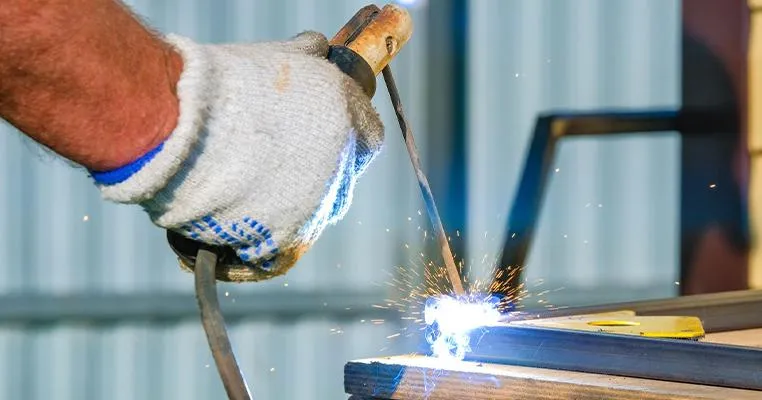Consumable and non-consumable electrodes
Consumable and non-consumable electrodes are two common types of electrodes used in arc welding that differ in their design and use.
Consumable Electrodes
Consumable electrodes, also known as welding rods, are consumables in arc welding. This means that the electrode is gradually consumed during use and melts along with the weld. This type of electrode is commonly used in the SMAW (shielded metal arc welding) welding method. During the arc welding process, the characteristic of consumable electrodes is that the electrode itself melts and transfers to the parent material in the form of droplets, while the filler material (electrode) is fed into the molten pool and melts into the parent material. There are many types of consumable electrodes, including different coating types and welding currents, which can be understood through the numbering system of the American Welding Society (AWS).
Non-consumable Electrodes
Non-consumable electrodes are non-meltable in arc welding, so they do not become part of the weld. This type of electrode is commonly used in the TIG (tungsten inert gas welding) welding method. In GMAW (gas shielded arc welding) or MIG welding, the electrode requires a continuous wire feed and may include a consumable tubular electrode with flux. The advantage of non-consumable electrodes is that they can be reused, which reduces costs, but they require more precise control to ensure consistent weld quality.

Summary
When selecting an arc welding method, the choice between consumable and non-consumable electrodes depends on the specific needs of the welding application, including the required welding speed, cost-effectiveness, and precise control of weld quality. Understanding the two types of electrodes can help choose the method that is best suited for a specific welding task.
-
What is a medium-frequency pulse? What types of welding are suitable for?hírekNov.24,2025
-
Why is the overall cost of CO2 welding lower than that of shielded metal arc welding?hírekNov.21,2025
-
Welding Knowledge 6hírekNov.20,2025
-
What is a low-frequency pulse? What types of welding are they suitable for?hírekNov.19,2025
-
Why are the weld joints from CO₂ gas shielded welding of such high quality?hírekNov.18,2025
-
J506 Welding Rod - Low Hydrogen, All-Position, AC/DC E7016hírekNov.17,2025


